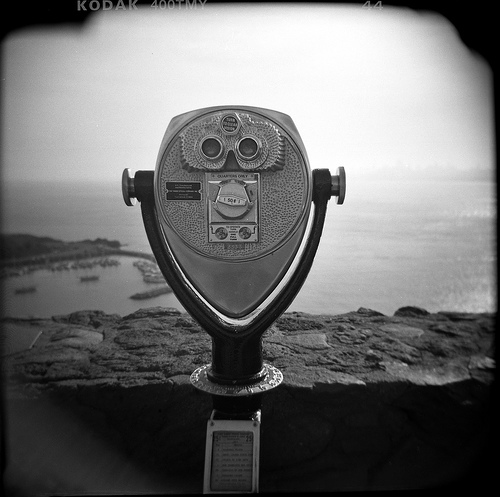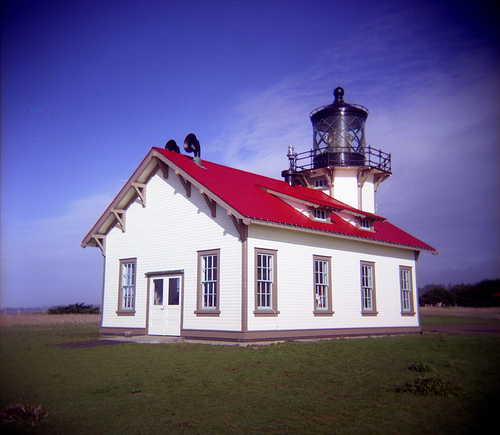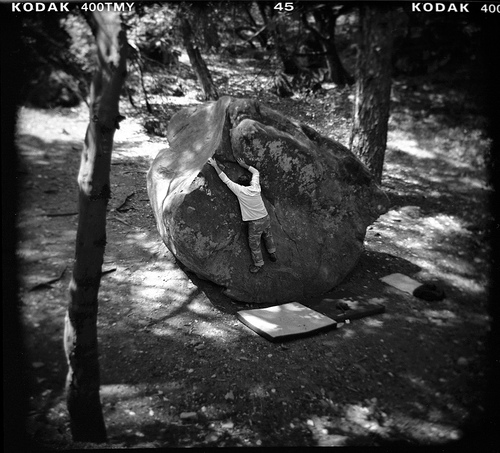History In 1982, Mr T.M. Lee, founder of Universal Electronics Ltd in Hong Kong, wanted to release a medium format camera to supplement the companies flash products which were increasingly facing competition from cameras with built in flash made by competitors. The original target market was Mainland China so to be affordable, the camera had to be made cheaply and be fairly reliable. The result was the Holga.
In the 1990s, the Holga saw a huge increase in popularity. First of all, art schools and photography classes started to use Holgas to teach the basics of photography. Also, camera retailer, Lomographic Society International (LSI) started to market the camera as part of their Lomography movement.
In addition to that, the toy camera movement was gaining momentum and the Holga quickly became one of the mainstays in that genre of photography.
Specifications The Holga is essentially a plastic box with a plastic lens. It uses medium format (120) film and there is minimal control over exposure and focus. The lens is a simple meniscus lens with a focal length of 60mm. Focusing is achieved by turning the lens barrel. Distances are judged using symbols which represent 4 different distances from 4 feet to infinity.
Shutter speed is listed as 1/125 and there is a switch which allows you to do bulb exposures. The "specifications" for the Holga also state that the apertures are f/8 and f/11 but due to a design flaw, many Holgas have only 1 usable aperture which may really be f/13 depending on who you talk to. It is possible to modify the camera to get two working apertures and the camera in the photo above has been modified to have actual apertures of f/8 and f/11.
Image size is determined by a mask inside the camera. The interchangeable masks come in the 6x6cm square or 645 (6x4.5cm) portrait style formats. When 6x6 is used, a roll of film will yield 12 photographs. When the 645 mask is used, there will be 16 images on the film. The camera can also be used without any mask which results in an approximately 6x6 square image extending beyond the intended image area. Some mechanical vignetting may also occur when the mask is not used.
Holga Models There are many variations of the Holga 120. The 120S (now obsolete) and 120N are the most basic but do have a hot shoe to attach an external flash. The 120FN is a built in flash version and the 120CFN is the color flash version that allows the photographer to use the flash with 1 of 4 colored filters. All of the recent models come in a glass lens version and those have a "G" in the name (e.g. 120GFN). There also exists a variant called the WOCA. This is no longer made and has been replaced by the 120G series.
The Images Because the lens is a simple plastic lens, the resulting photographs are not tack sharp and have a slight blur to the them. Many times that blur becomes more pronounced towards the edges of the images and, depending on the lighting conditions, there may be some vignetting.
Some Holgas will have light leaks. Some users like the leaks but for those who don't they can be minimized by spray painting the inside of the camera matte black and taping up the seams of the camera.
Because the film transport is decoupled from the shutter, it is possible to easily take multiple exposures (sometimes unintentionally).
Modifications The good thing about the Holga is that it can be modified with only a small amount of effort. It is possible to convert the camera to take 35mm film or the lens can be completely removed and replaced with a pinhole.
Where To Get A Holga Sometimes, local independent camera stores will sell Holgas especially if there is a college or school nearby that uses them in their photography courses. But the easiest place to get one is online either in one of the main online camera stores or on eBay (sellers in Hong Kong sell new Holgas on eBay).
Lomographic Society International also sell Holgas normally as part of Lomographic packages. The packages typically come with extras but many times the don't warrant the increase in price that LSI sells at. LSI also distribute cameras through "trendy" clothing and accessory stores such as Urban Outfitters in the US.
Holgamods.com sells modified cameras and is worth checking out.
My Opinion The Holga is a great camera from anyone wanting to get into cheap plastic toy cameras. In today's world, this camera is a vast and welcome contrast to mega pixel'd digital cameras with auto-everything. I like the softness of the images and the atmosphere of the photographs. The camera itself is easy to use and is fairly robust. If it does break, you can probably glue it back together or buy a brand new one for less than $30.
If you are going to shoot 120 film it is a good idea to make sure it is going to be easy for you to develop. Black & white film is easy to process at home and if you have a scanner you don't even need a dark room. For color, you will probably have to drop it off at a lab. Some consumer labs don't develop 120 so check before hand.
All in all, I recommend the Holga 120 so go check it out
Links My Holga photos on Flickr.com Squrefrog - lots of Holga information Wikipedia Camerapedia Lomographic Society International





